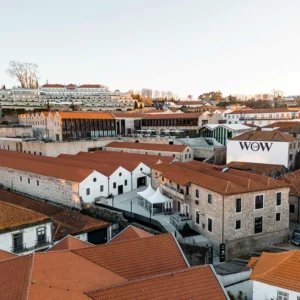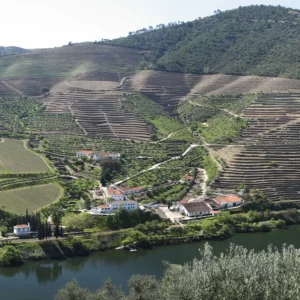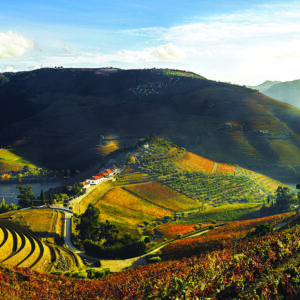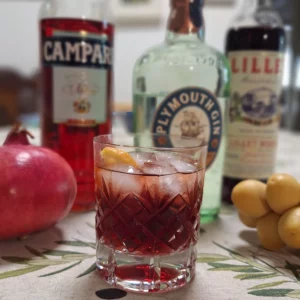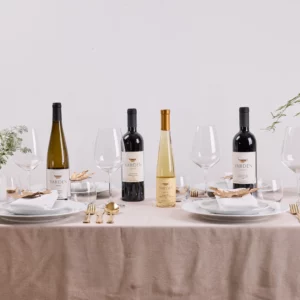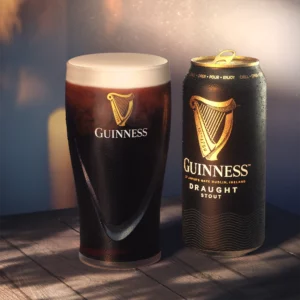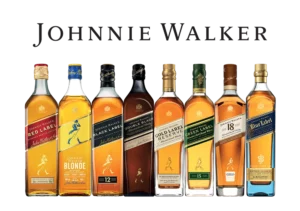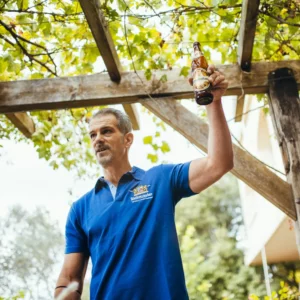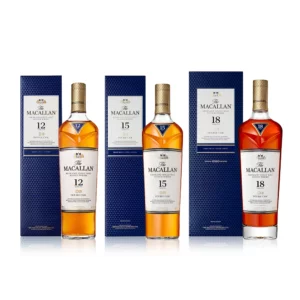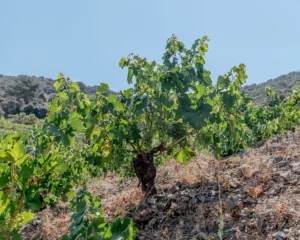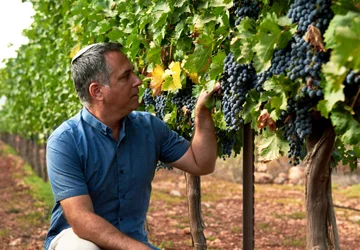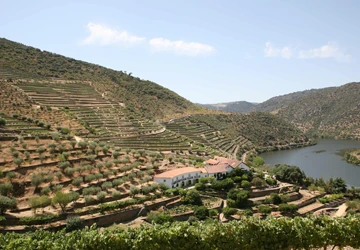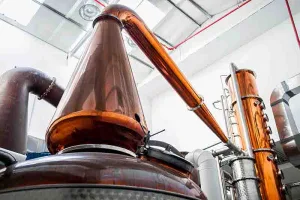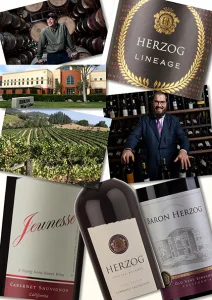I have just come up to my 15th year as wine writer for the Jerusalem Post. That is a lot of articles! Every December, every year, I write an article on sparkling wines for the end of year celebrations. That was until last year. I just could not bring myself to write about partying with a war going on and hostages not yet home. This year I feel the same. I never believed a year ago, that the war would still be going on a year later, that the hostages would still not be home, and so many of our finest would have been killed and maimed in the October 7th War. The country seems to be in a collective depression. It feels disingenuous to write about celebration, when the mood is rock bottom, but maybe an excuse to party is a good thing.
Sparkling wine is certainly the wine of fashion, partying and celebration. Whether on New Year’s Eve, at a wedding or at a birthday, it remains the classic wine to make a toast with. It is also symbol of success and happiness. Though it is a style of wine that has taken Israelis time to learn to appreciate, sparkling wines have become very popular here, though fads fluctuate. A few years ago Spanish Cava was all the rage and the word Cava became the slang for any wine with bubbles. Then it was Italian Prosecco that became popular. Now the discerning drinker is looking for something else and Cremants from different regions of France are creating interest.
Champagne is the ultimate expression of the art, which is replicated by ‘traditional method’ sparkling wines made elsewhere. It is little known, but between the late 1950’s and 1980’s, Carmel produced genuine ‘méthode champenoise’ (aka the Classic or Traditional Method) sparkling wines. It was an expensive undertaking needing a special work force as everything was done by hand. There was no market for expensive sparkling wine in those days and so they eventually stopped production. It was too unprofitable. The only remaining clue of a champagne past, were the old pupitres (wine racks for riddling), which could be seen at the Rishon Le Zion Cellars until Carmel vacated the premises.
However, it was not until the 1990s that Israel took a giant step forward to producing quality sparkling wine. The Golan Heights Winery showing the seriousness and professionalism that set them apart, sent their new winemaker, then a youngster called Victor Schoenfeld, to work for six months at Jacquesson Champagne to learn the secrets of the ‘champenoise.’ The Golan then invested in all the modern equipment to make traditional method sparkling wine. This time the process was mechanized and gyro-pallets were used instead of manual remuage.
At the 1996 International Wine & Spirit Competition in London, Israeli sparkling wine arrived on the international stage. Yarden Blanc de Blancs, then a non-vintage wine, won the Trophy for The Best Bottle Fermented Sparkling Wine. I was there at the Guildhall in London in a hired dinner jacket and bow tie, at the prestigious gala diner when the trophies were presented. It was a seminal moment because it was international recognition for Israel but also illustrated that the Golan Heights Winery way for investing in quality and not cutting corners payed off big time. This high profile award was repeated in 2003 when Yarden Blanc de Blancs 1997, by then a vintage wine, won the same trophy. The 1999 vintage also won a prestigious trophy at Vinitaly of 2006. These prizes were to the immense credit of the Golan Heights Winery and clearly showed our sparkling wines were world class.
Now fast forward to the early 2020s, and there has been a mini boom of traditionally made sparkling wines made in small or even tiny quantities. This was led by Razi’el Winery, founded by the Ben-Zaken family, also owners of Domaine du Castel. No doubt, the Golan Heights Winery is one of the most advanced wineries in the world with technology as up to date as tomorrow in vineyard and winery. Raziel has a different approach. Theirs is a boutique, hands-on winery. They have fashioned a handmade, artisan expression of sparkling wine, also made strictly in the same way as Champagne. They were preceded by Pelter, who first made their sparkling wine a few years ago, and followed by other wineries such as Dalton, Ellah Valley, Psagot, Ramat Naftaly and Sphera and no doubt there are others. However, handcrafted sparkling wine is arguably best represented by Razi’el, and that perfectionist Francophile, Eli Ben-Zaken.
Over the years wineries like Carmel, Tabor, Teperberg and Tishbi have all dabbled in sparkling wines, but the Israeli public either want the real thing, Champagne, a known brand from abroad, like Cava or Prosecco, or the cheapest fizz possible. Particular popular in that category are Lambrusco and Moscato.
Sparkling wines generally fit into three categories. The finest Israeli sparkling wines are made like Champagne, by the Traditional or Classic Method. With these wines, the secondary fermentation takes place in the same bottle in which the wine is eventually sold. The mid-priced sparkling wines are often produced by the Cuve Close or Charmat process. The secondary fermentation takes place in a tank and they are then bottled under pressure to preserve the bubbles. Then there are the basic carbonated wines, made as some cynics say by the Coca Cola method. To these may be added variations like the lightly sparkling Moscato and the naturally produced Pet-Nats, which may also be described, tongue in cheek, as hipster’s champagnes.
Opening a bottle of sparkling wine is dangerous. The pressure in a bottle is similar to the pressure in the tire of a double decker bus. The cork also is a projectile that can fit into the eye socket and do untold damage. So take heed and beware. Hold the bottle at 45° and be sure it is not pointing at anyone (even someone you don’t like). Gently undo the wire surrounding the cork keeping a finger on top of the cork. Hold the cork and gently turn the bottle. Control the effect of the pressure so it comes out with an erotic sigh rather than an uncontrolled pop. Once we insisted to only use flute or tulip glasses to preserve the bubbles. Now we are less strict, and a regular white wine glass is considered more than adequate, providing a better stage for the aromas. Pour gently and steadily with the glass on a slant so it does not froth over. Just avoid the flat, coupe glasses, shaped to fit Marie Antoinette’s breast, which are more suitable for cocktails or ice cream.
Sparkling wines are traditional served as an aperitif. The French serve it bone dry and young with the pronounced acidity at its fiercest. The Brits, the world’s largest consumers of Champagne, serve it with a little more bottle age to bring out the complexity. It often their preferred choice at the end of a banquet after many courses and wines. A brut champagne is a clean refreshing way to finish an evening. Champagne and quality sparkling wines are certainly versatile and can accompany a meal or an occasion as well.
Sparkling wines go particularly well with anything that are good with white wines. (Note they are perfect with Sushi). There is great variety of Israeli sparkling wines and they can more than match up to the needs of any party, wedding or celebration. They are perfect wines for Hanukkah, Thanksgiving, Christmas, Sylvester’s, New Year or Novi God. Each has his own name and reason, but whatever it is, fizz is appropriate. Some recommendations for this year’s festivities are:
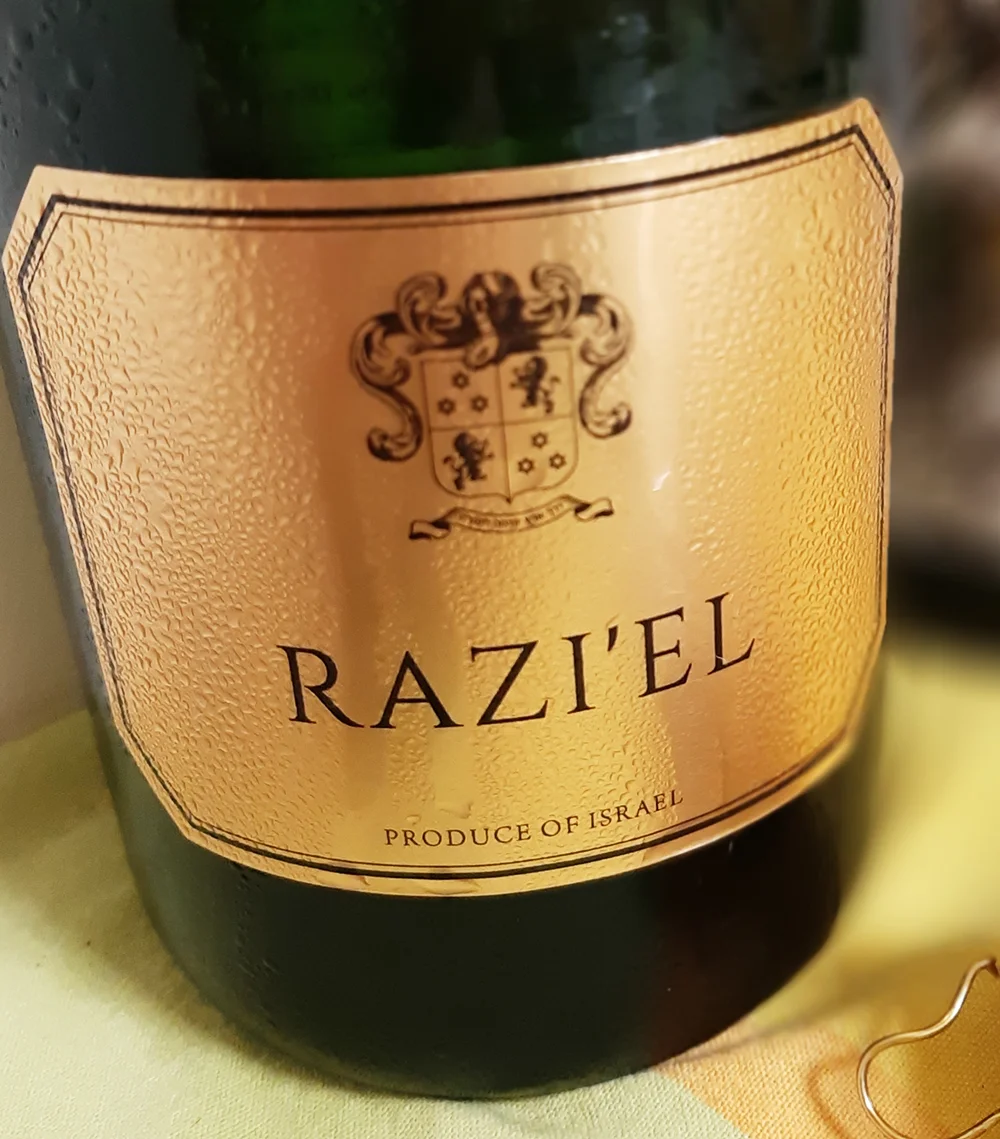
Razi‘el Brut Nature NV
A beautifully crafted traditional method sparkling wine, which was fermented in 600 liter demi-muids oak barrels and then aged sur lies for 6 months. The wine is crisp, citrusy, invigorating and full of flavor with a long refreshing finish. It is a beautiful expression of the craftsmen approach and a wonderful addition to Israel’s sparkling wine portfolio. (Brut Nature means there was zero dosage, and NV means Non-Vintage.) NIS 249
Yarden Blanc de Blancs 2018
Made from Chardonnay grapes grown in the northern Golan. The wine rested no less than five years on its tirage yeast. It has a delicate nose of white flowers, citrus and freshly baked brioche. It also has good complexity, delicate flavors in the mouth with almost a creamy quality and a fine, well-defined finish. NIS 150
Gamla Brut NV
Made from Chardonnay and Pinot Noir grapes strictly by the traditional method with the secondary fermentation in bottle. The wine then rested 12 months in bottle on its tirage yeasts. It has refreshing aromas of lime, citrus with a pronounced acidity and a clean finish. Represents great value. NIS 75.
Bottega Gold 2022
Prosecco is the Italian sparkling wine that took the world by storm. The bottle is a striking gold color, with a ‘B’ embossed on it. The wine is made mainly from Glera grapes grown on the slopes of Treviso in Veneto. It has a combination of fruit and floral notes, is light bodied, harmonious, and though dry, has an impression of a touch of fruity sweetness. Bottega is a many generations family of distillers and winemakers. The wine is imported by Tempo Beverages. NIS 120
Psagot Levana 2022
An innovative wine produced from Chardonnay grapes which has undergone a fast-track traditional method process. The wine is crisp, refreshing, lemony and uplifting. Casual and easy going. A fun expression made by Psagot, the largest winery in the Central Mountains Region. NIS 99
Marcel Cabelier Cremant du Jura Brut
Cremant is the generic word for a traditional method sparkling wine made in France, but outside the area of Champagne. The wines are made in the same way, but they don’t have the cachet of Champagne, however there is variety (many different regions produce their own Cremant), the quality is very good and the value is excellent. This cremant is aged on its lees for a year. It is crisp and refreshing, mainly made from Chardonnay and has floral and citrus aromas and subtle toasty notes. It is imported by Shaked. NIS 90
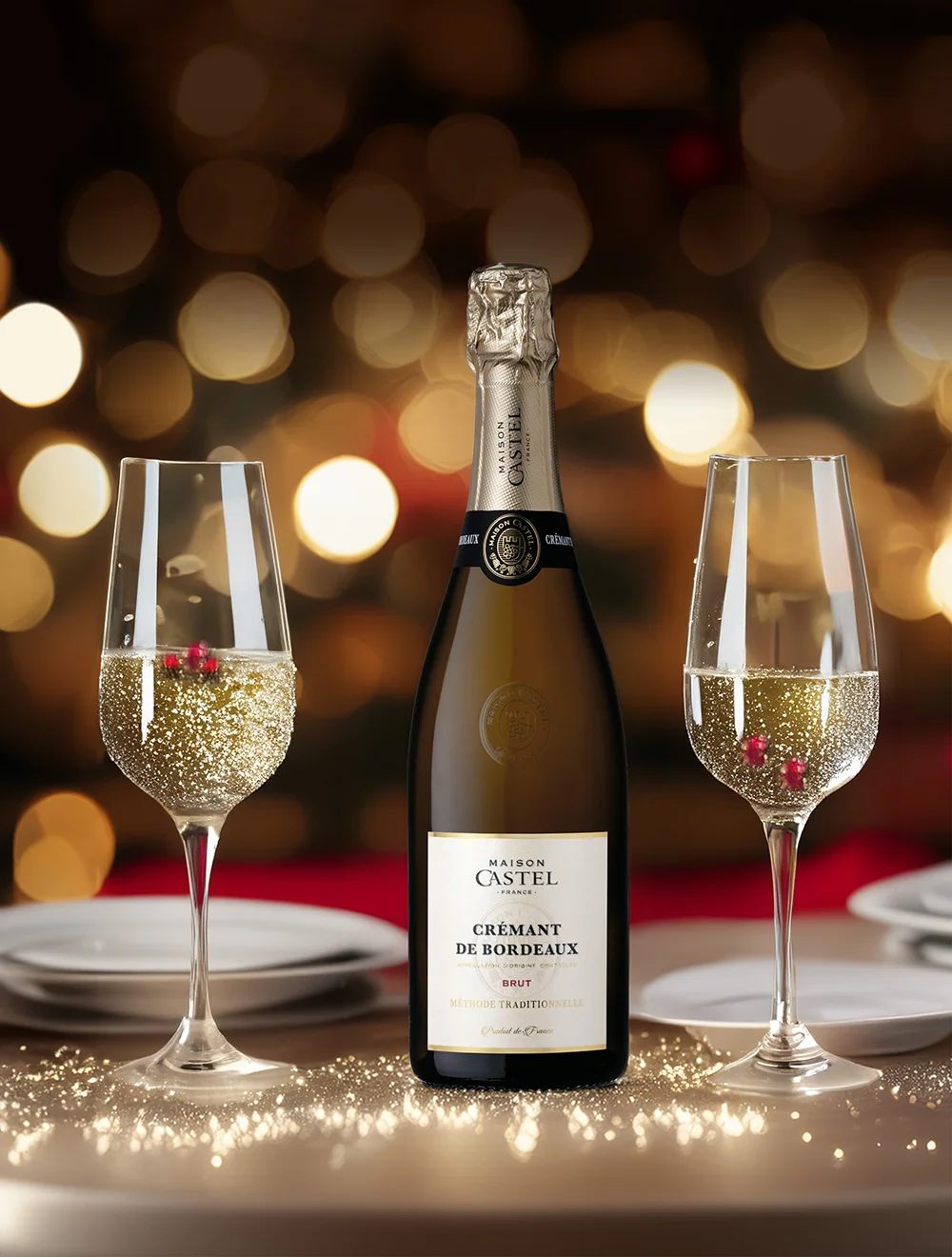
Maison Castel Cremant de Bordeaux Brut
The wine is made from Semillon and Cabernet Franc grown in Bordeaux. It is fresh, elegant, lively with nice length. Maison Castel is a range of regional wines produced by Castel Freres. The Castel Group, founded in 1949 by Pierre Castel, is a very large beverage company and the largest French wine company. It has no relation or connection to our own Domaine du Castel. Their wines, imported by Israco, are big sellers in the Tiv Taam supermarket chain. NIS 59
Private Collection White Moscato 2024
Moscato is still very popular and the kings of Moscato are Carmel who make Moscato under three different labels; Buzz, Selected and Private Collection. I am not skilled enough to judge the differences by taste, but the principles of each of their Moscatos are the same. All the wines are low alcohol, slightly sparkling, aromatic with grapey, fruity flavors and sweet. Private Collection is one of our more long-lasting labels, being first launched in 1988 and this particular Moscato comes in a nice blue bottle (copying the Bartenura Moscato.) Moscato is truly a wine to drink any time at any place, being ideal for breakfast or a brunch onwards. NIS 45
Fizzaro Moscato
Only 9% alcohol, this is an aromatic, fragrant semi dry sparkling wine which has delicate sweetness but also a lively freshness and flavorful finish. It is made in Spain in the La Mancha region and is imported by Zion Winery. NIS 40
Giacobazzi Lambrusco White
A special edition Lambrusco produced by one of the giants from Modena in Italy’s Emilia Romagna region. The wine is light, fruity and comfortably semi dry. People who like Lambrusco, will like this very much. Certainly, it is a good party wine. Imported by Carmel. NIS 30
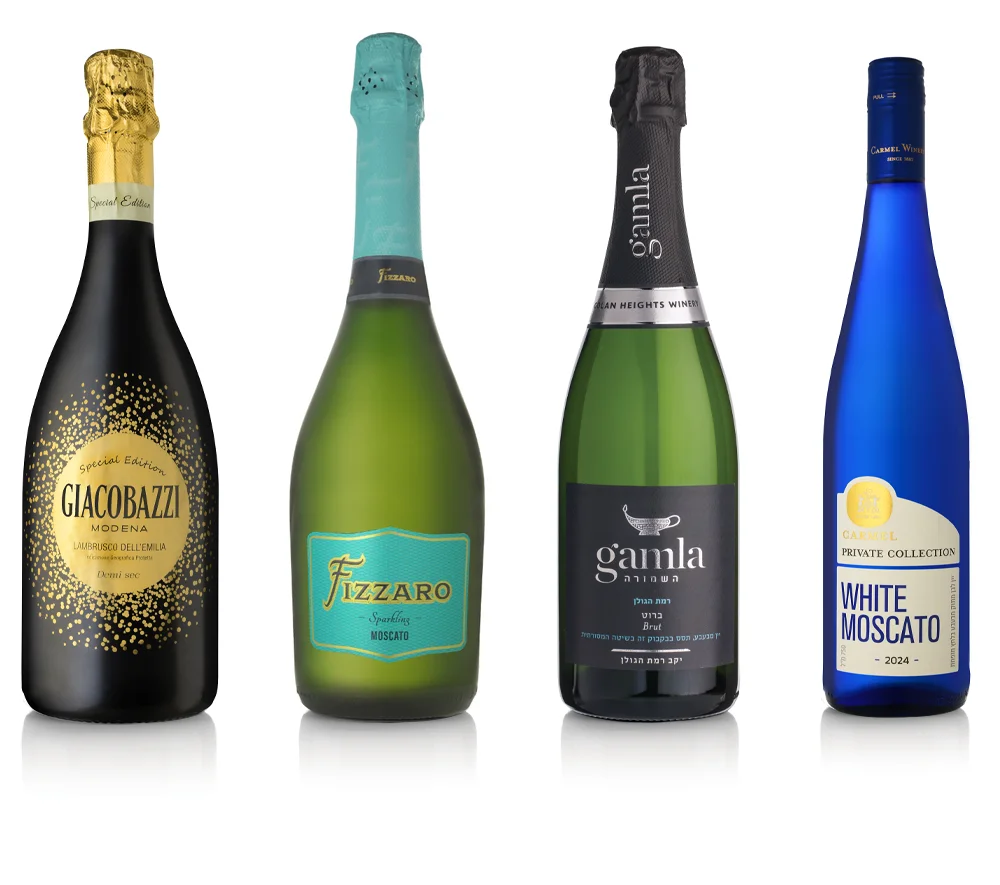
So, this year, go through the motions, even if you do not feel like it. Open a bottle with friends, smile and raise a glass to a better year in 2025. Fake it until you make it, and you may have a party that leaves you smiling and happy in spite of everything.
Adam Montefiore is a wine trade veteran and winery insider turned wine writer, who has advanced Israeli wines for 38 years. He is referred to as the English voice of Israeli wine and is the Wine Writer for the Jerusalem Post. www.adammontefiore.com



